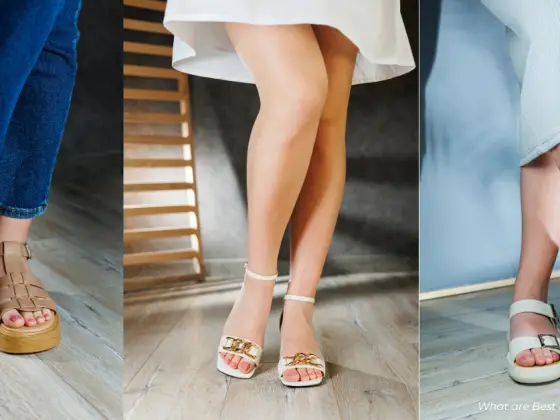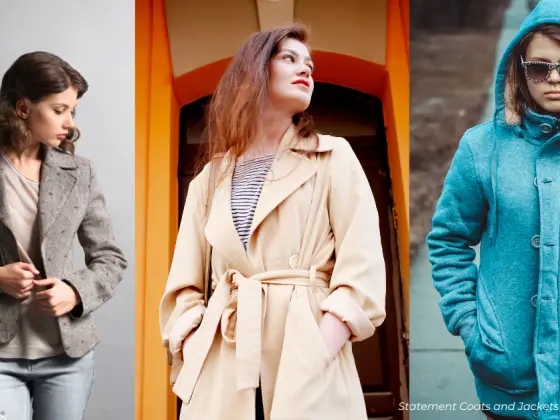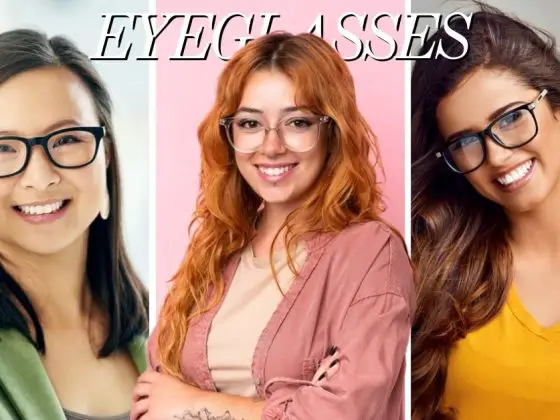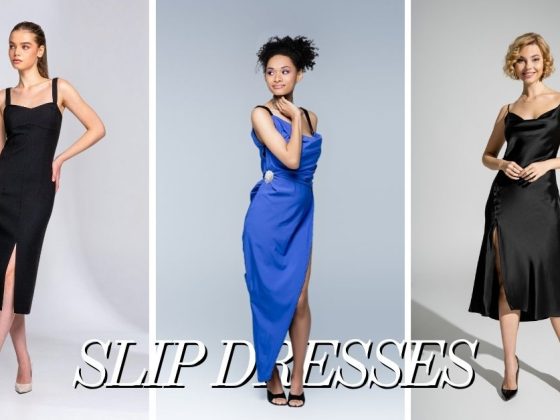
Every workplace has its own unique dress code and culture, which has been evolving rapidly, particularly with the rise of remote and offsite work models accelerated by the pandemic. Even if your internship has a documented dress code, it might need to fully reflect current fashion trends or societal norms, making it challenging to determine appropriate attire.
The Importance of Workplace Dress Code to Empower Your Success
Business Professional
Professional attire is formal and conservative, usually seen in finance, banking, government, and law. It usually involves a well-fitted suit or pantsuit with a button-down shirt, often paired with a tie or a pencil skirt with a blazer. Ensuring your suit fits perfectly is critical to a polished look. For footwear, closed-toe heels no higher than three inches are ideal, though dressy flats, loafers, or oxfords are also appropriate. This dress code demands a classic, refined appearance, reflecting professionalism and respect for the workplace.
Business Formal
Business formal attire is more sophisticated than business professional, suited for high-profile events like awards ceremonies and gala dinners. It usually involves a dark-colored suit or skirt suit with a dress shirt and polished dress shoes. Accessories such as silk ties, pocket squares, and a simple belt should be elegant and understated, while jewelry and cufflinks should be minimal and refined. The key to business formal is sophistication and elegance, reflecting the importance of the occasion. Careful attention to every detail helps ensure a distinguished appearance that meets the high standards of formal events.
Business Casual
Business casual is a comfortable blend between formal and relaxed attire, so you don’t need to wear a suit and tie. Instead, wear a collared shirt—like a button-up or polo—with slacks, khakis, chinos, or a pencil skirt. While a blazer or sports coat can enhance your look, a full-suit jacket isn’t necessary. For shoes, stick with closed-toe options such as boots, heels, flats, loafers, mules, or oxfords that keep your look professional. This style is excellent when unsure of the dress code, as it lets you appear polished and professional while still fitting in with various workplace environments.
Casual and Smart Casual
Smart-casual attire takes everyday casual wear up a notch, making it ideal for job interviews, client meetings, and events in more relaxed work environments. This look combines polished elements like a well-fitted jumpsuit, a tailored blazer, and high-quality footwear to create a modern yet professional appearance. When dressing smart-casual, aim for a blend of sophistication and comfort by choosing stylish, professional pieces while incorporating current trends. This ensures you present a well-groomed, contemporary image that fits various professional settings where a formal dress code isn’t necessary.
Work Locations are Evolving
Work environments are undergoing significant changes, with the hybrid work model becoming a standard solution for many organizations worldwide. This shift impacts various aspects of the workplace, including company culture, staffing levels, commercial real estate, and fashion trends. As employees return to the office, whether voluntarily or due to new policies, the question of what to wear becomes increasingly essential. Moving from remote work to an in-office presence introduces challenges, particularly when adapting to appropriate office attire.
Transitioning back to office clothing can feel daunting for those accustomed to working in pajamas or casual loungewear during the pandemic. The need to deal with ironing, dry cleaning, and the discomfort of professional attire can be a significant adjustment. Recent data from IWG, a flexible workspace provider, shows that 79% of hybrid workers have changed their dress habits to fit their new work settings. Trends in the office include “quiet luxury” styles, which focus on subtle elegance, and “dopamine dressing,” emphasizing wearing outfits that bring personal joy. These evolving trends reflect broader changes in work culture and individual expression in today’s workplace.
Clothing Essentials
Comfortable
Your comfort is crucial when choosing your work attire. If wearing a full suit or high heels feels impractical, make the necessary adjustments to find a balance that suits you. Experiment with different combinations until you achieve a look that makes you feel comfortable and confident.
As the workplace evolves, particularly with the rise of hybrid work models, many are grappling with transitioning from home attire to office wear. The shift from casual loungewear to more formal office clothing can be challenging. Recent surveys indicate that many hybrid workers are adapting their wardrobes to fit the new norm, embracing styles like “quiet luxury” or “dopamine dressing” that bring personal joy and suit the office environment. Consider how you wish to present yourself professionally and choose attire that aligns with your role and personal brand while keeping comfort in mind.
Dress for the Day
A practical approach to hybrid work fashion is to plan your outfits for the week in advance. Selecting your workwear at the start of the week prevents the last-minute scramble of choosing an outfit each morning. Review your weekly schedule to determine the days you will be in the office and the nature of your activities. For instance, the attire suitable for a day filled with business negotiations will differ from what you might wear on a day dedicated to team training, where a more casual style could be appropriate.
In essence, hybrid workwear should be tailored to fit the context and activities of the day while ensuring comfort and aligning with your professional image. How you dress can influence perceptions and affect your professional opportunities, so it is essential to dress in a way that reflects your expertise and personal brand. By making thoughtful choices about your wardrobe, you meet the expectations of your work environment and present yourself in a way that supports your career goals and personal identity.
Personal Brand Image
Everything about how you present yourself at work—your fashion choices, your demeanor, and even your body language—shapes how others perceive you and your work. This, in turn, influences how you’re treated and the opportunities you receive. Considering your role and seniority, consider the impression you want to make on clients, stakeholders, and team members.
When appropriate with your employer’s dress code, choose a style that reflects you the most and aligns with the image you want to project. It’s important that your attire communicates your professional identity and supports your brand. Keep in mind that your fashion sense can and should evolve. What felt right pre-pandemic might not suit your current professional environment. Embrace the opportunity to adapt your wardrobe to fit the present and future of your career.
Video Call Dress Code
Video calls are now a staple in the business world, and figuring out the right look can be challenging. You might wonder if wearing sweatpants with a suit jacket is acceptable or how formal you must be. Deciding on your attire often depends on the context of the call.
A polished look might be necessary for some meetings, while others might only require a more casual “Zoom shirt.” When choosing your outfit, it’s helpful to consider the nature of the meeting and the audience. High-stakes presentations or client calls require a more professional appearance, whereas internal team check-ins are more relaxed. Finding the balance between comfort and professionalism can help you feel confident and prepared, no matter the setting.
Practical Dressing Tips for Video Calls or Remote Work
- Stick to Simple, Solid Colors: Opt for solid colors instead of busy patterns. Patterns can be distracting and may need to show up better on camera. Neutral tones like blues, grays, and pastels usually look best and help you maintain a professional appearance without overwhelming the screen.
- Focus on the Upper Half: Since video calls usually emphasize your upper body, ensure your top half looks polished. A well-chosen shirt or blouse can make a big difference. You don’t need to worry about what’s below the waist but avoid overly casual items like sweatpants or pajama bottoms, as they can affect your mindset and professionalism.
- Avoid Overly Casual Wear: Even though you’re working from home, it’s essential to dress in a way that reflects your professional role. Swap out those sweatpants for nice jeans or slacks, and choose a clean, comfortable shirt. This helps maintain a professional image and boosts your confidence.
- Pay Attention to Grooming: Ensure your hair and grooming are tidy. A well-groomed appearance can significantly impact your perception and make you feel more prepared for the call.
- Consider Your Lighting and Background: Good lighting is critical to looking your best on camera. Position yourself so that natural light illuminates your face, avoiding harsh shadows. Additionally, ensure your background is clean and organized to avoid distractions.
- Test Your Outfit: Before your call, check your outfit’s appearance on camera. This helps you ensure that colors and patterns look right and that you’re not blending into the background or looking washed out.
By following these tips, you can present yourself confidently and professionally during video calls, helping to make a positive impression in your remote work environment.
Navigating workplace dress codes effectively involves understanding the expectations of your specific environment and balancing professionalism with personal comfort. Whether dressing for traditional office settings, hybrid work models, or remote video calls, your attire should reflect your role and contribute positively to your professional image by staying informed about your company’s dress code, choosing appropriate outfits, and adapting to evolving trends, you can ensure you present yourself confidently and make a favorable impression in any work setting.















